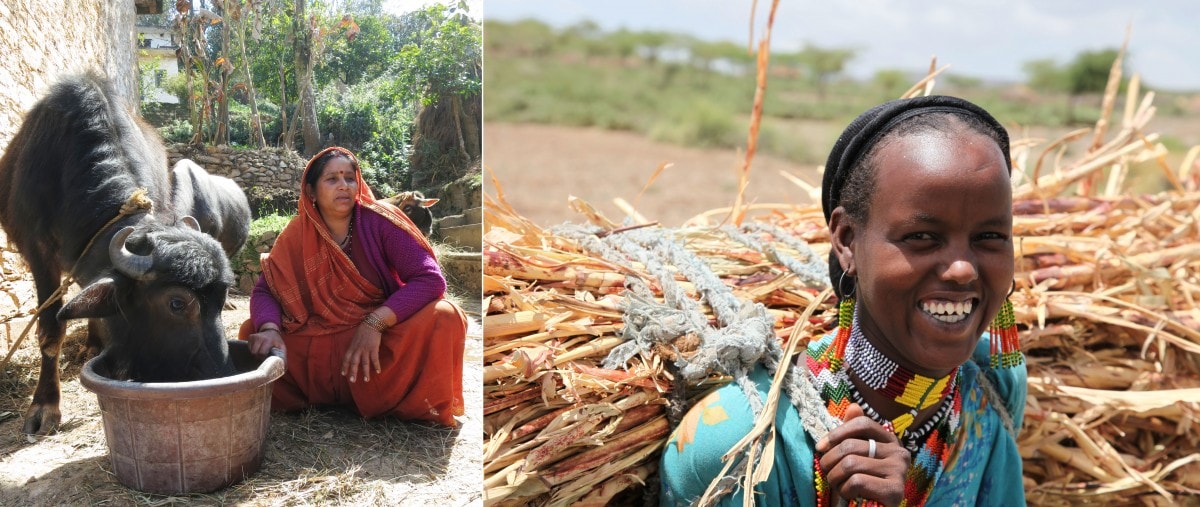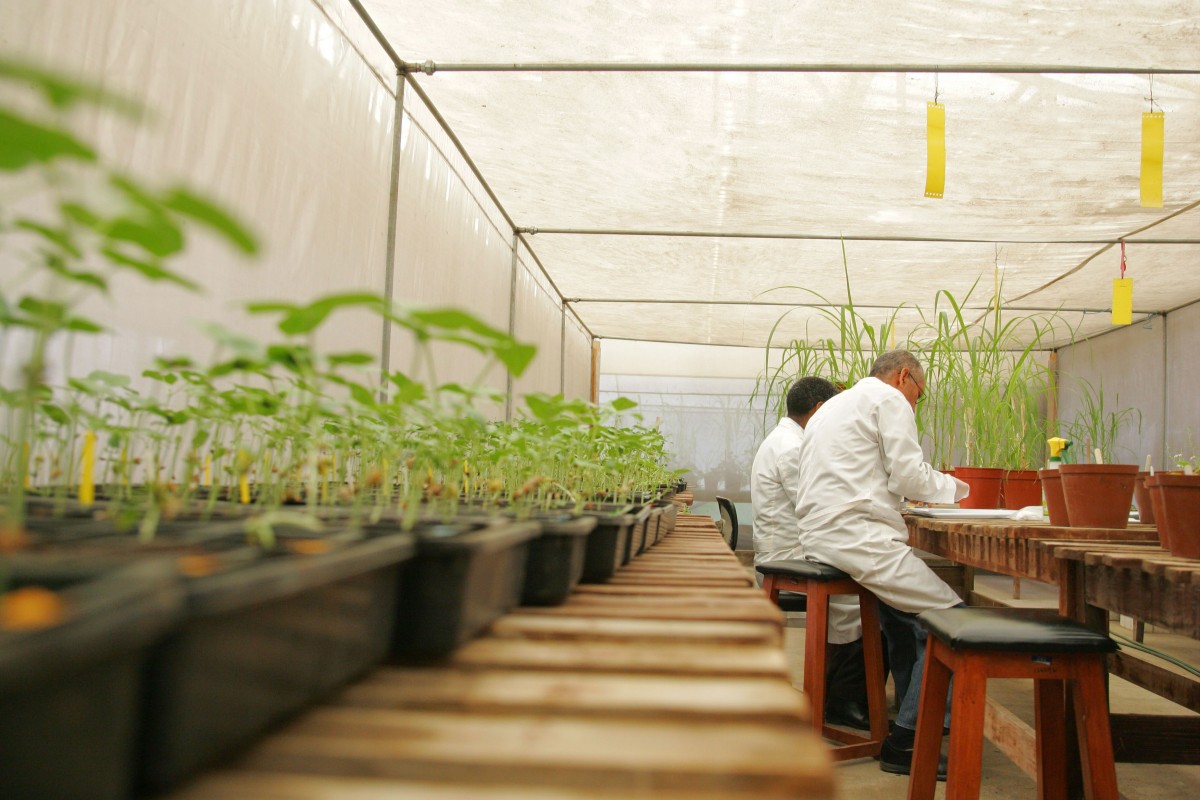
Photo: From India to Ethiopia, crop residues – the ‘leftovers’ after crops have been harvested – have long been valued by farmers as feed for their livestock. (Left) Photo S. Macmillan/ILRI (right) A. Habtamu/ILRI
These ‘leftovers’ are the most abundant kind of renewable biomass on earth, and require no extra land, water or other inputs than those used to cultivate the crops themselves. Although some nutrient loss occurs when residues are taken for use as fodder (rather than being recycled into the soil), the value gained from increased livestock production can help farmers pay for dung and fertilizer to keep soil fertility up. What’s more, when residues are not used for fodder, it’s common practice among many farmers, particularly in irrigated areas, to simply burn them to get them ‘out of the way’.
Because most breeding programs to date have focussed solely on grain quality and quantity, cereal crop residues are traditionally low in nutrients. But scientists at ICRISAT and ILRI, in collaboration with plant breeders, have shown that with the right cultivars – and a conducive policy environment – farmers across the developing world can make much more out of their harvest ‘leftovers’.
A win-win for people and livestock?
The majority of livestock across the tropics are undernourished, and that makes them decidedly underproductive. A recent study showed that in the top 10% of a sample of dairy households in India, independently of dairy genetics, milk yields were around 2200 kg/head/year, while in the remaining 90% of households they were less than 400 kg/head/year. As demand grows across the globe for meat and dairy products, this productivity gap means the 600-million-odd low-income farmers and herders in the developing world are missing out on potential profits and livelihoods.
That’s why, in the 1990s, ILRI scientists Ercole Zerbini and, from 2000 onwards, Michael Blűmmel and his team began exploring whether they could work with crop scientists to develop cultivars that would improve the quality and quantity of fodder byproducts, without trade-offs for the grain itself.
“Traditionally, there’s been a bit of a conflict, because people have always assumed that if you select for fodder traits, you might compromise the grain yield or the grain quality to satisfy people’s food needs,” says Blümmel.
But the scientists soon found that it was possible to improve the grain, crop residue yield and fodder quality simultaneously – and that such cultivars were popular with smallholders. “Farmers have seen for themselves that the yields of their animals go much higher when they use these varieties,” says Pasupuleti; and as such, they’re often willing to pay more for ‘full-purpose’ cultivars that produce better fodder.
“The animal [fodder] traits are becoming co-products rather than byproducts, and a part of the value proposition of the trait,” says Blümmel; he estimates that in rainfed areas this usually represents around 30 to 50% of the overall crop value.
“We’ve had a couple of sorghum varieties that have failed on the market, not because the grain yield wasn’t good enough, but it was the fodder traits which weren’t good enough for the farmers to benefit financially,” he says.
The research also showed that in some situations – such as during droughts – the fodder component “actually becomes even more important than the grain itself,” says Pasupuleti, as it can be critical for keeping animals alive over these periods.
 Crop breeders are focusing on selecting cultivars for release to farmers that fulfill ‘full-purpose’ criteria: resilient, locally-adapted varieties that produce high food yield, high fodder yield and good straw quality. Photo S. Mann/ILRI
Crop breeders are focusing on selecting cultivars for release to farmers that fulfill ‘full-purpose’ criteria: resilient, locally-adapted varieties that produce high food yield, high fodder yield and good straw quality. Photo S. Mann/ILRI
In the Beed district of Maharashtra State – also in Southern India – full-purpose sorghum crops are becoming increasingly popular among farmers, as the unusually-long droughts of recent years highlight the need for affordable animal feed and multiple income streams.
“Farmers have been paying a lot of money for their fodder,” says Vasant Prabhurao Suryavanshi, an extension agronomist for the Regional Agricultural Extension Education Centre in Ambajogai. “They’re realising that when there are ups and downs in the climate, the animal feed is very valuable, so they’re finding that the [full-purpose] sorghum is the best option for them.”
Read more on policy implications and the future outlook for cereals purposed as feed and fodder.
This story was originally published by CRP-Livestock via ILRI.
